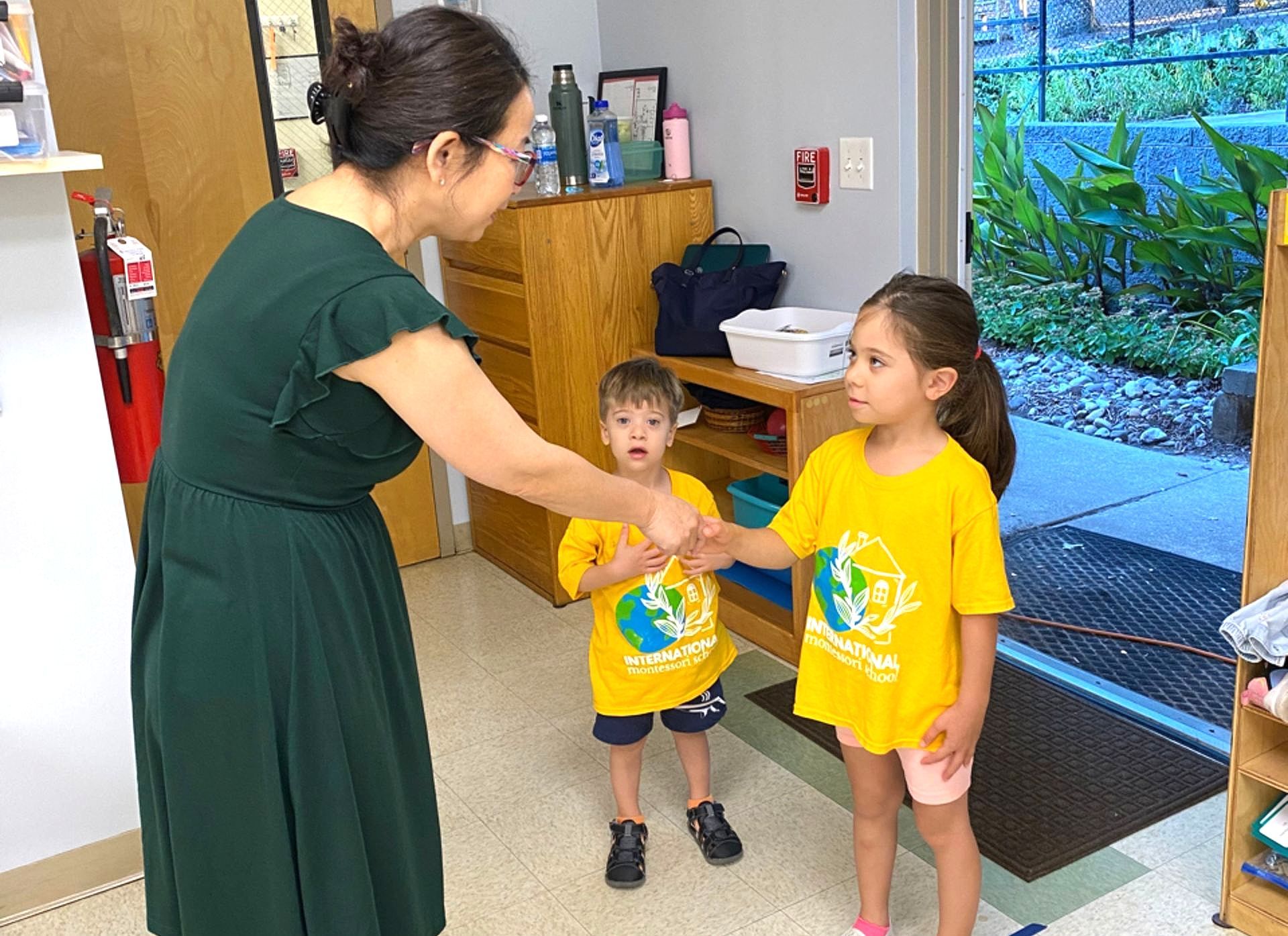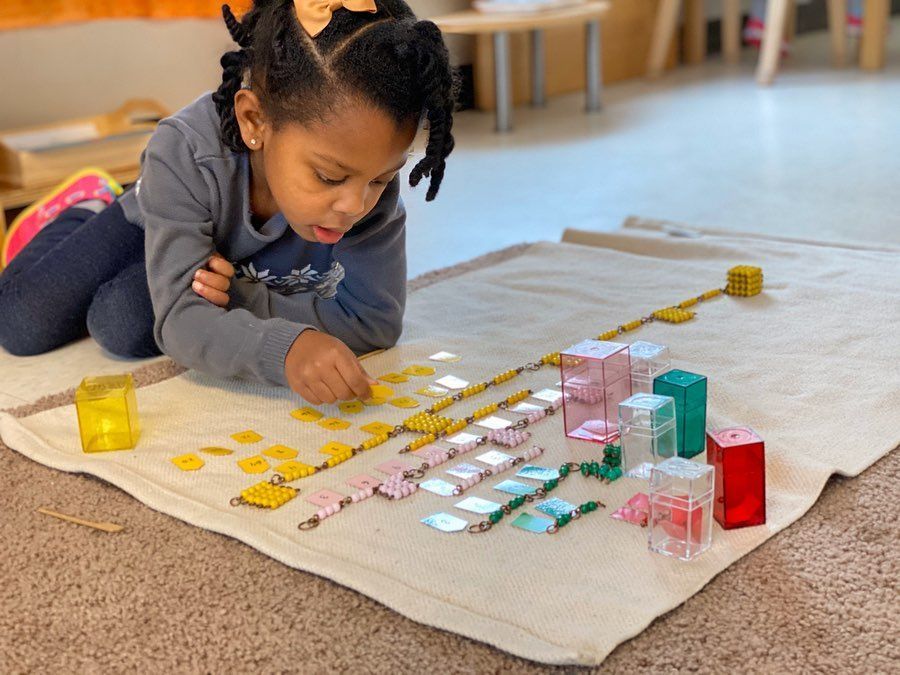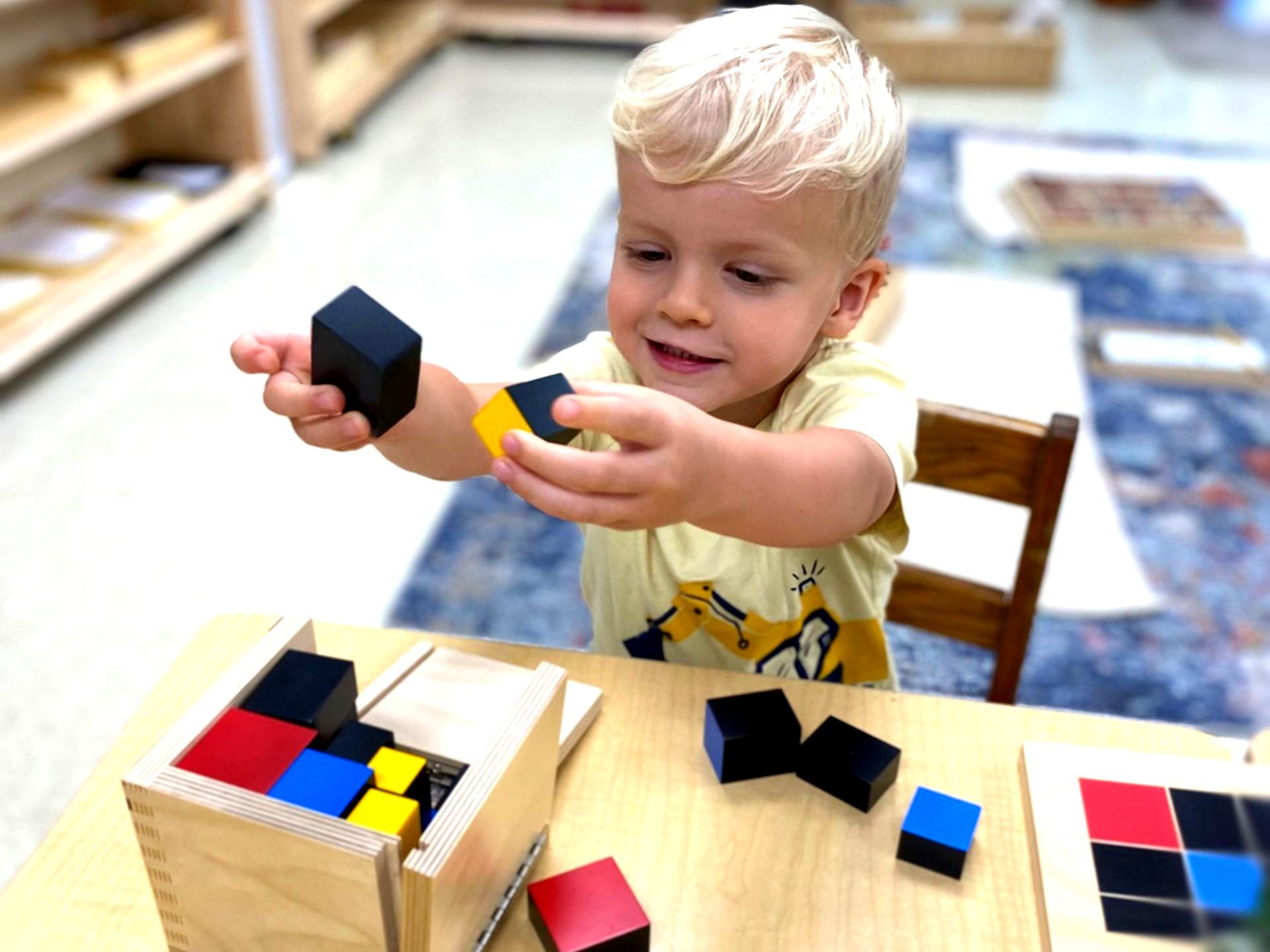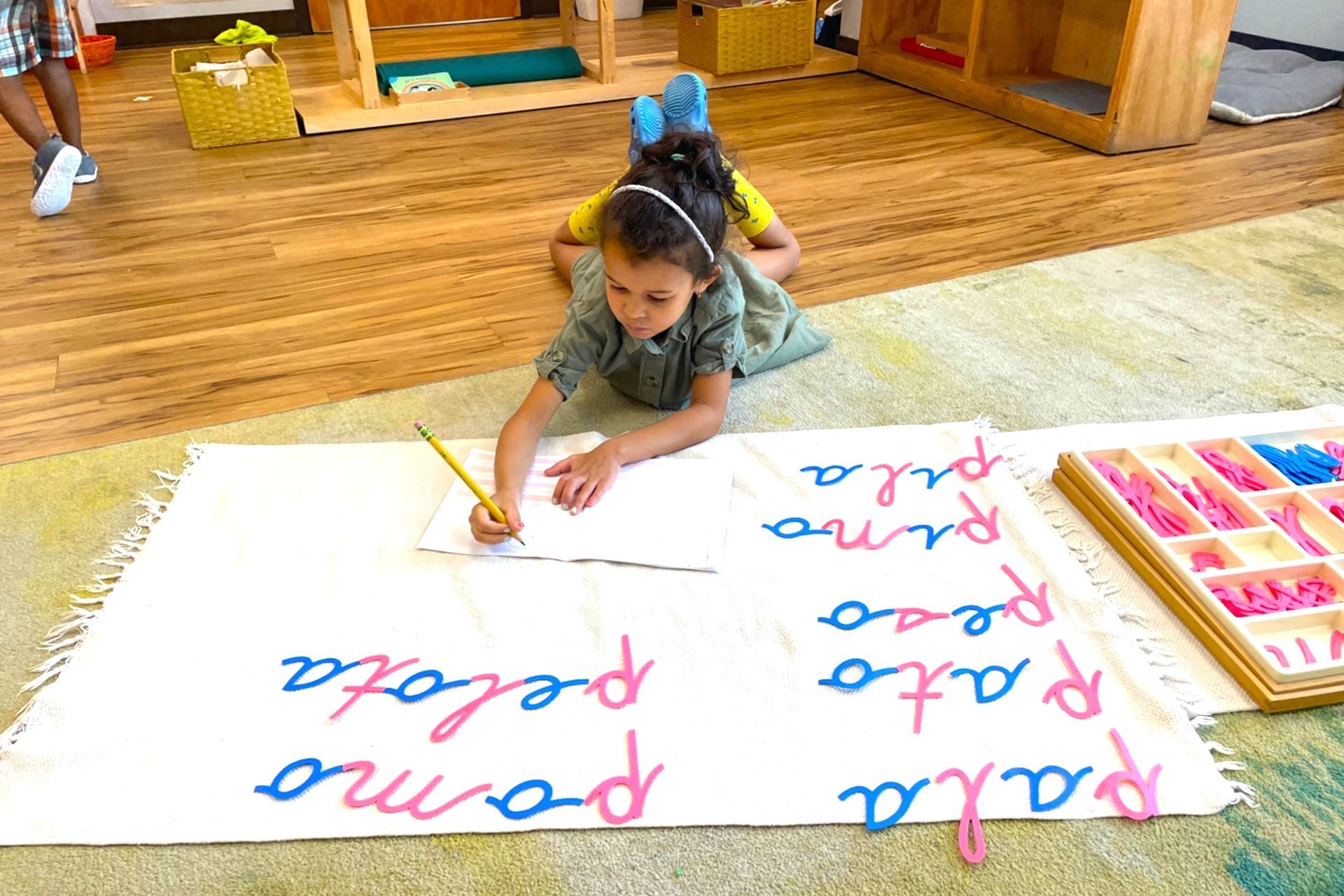EARLY CHILDHOOD
3 – 6 years
Say
Hola,
Bonjour, or
Ni Hao to Learning a New Language
While the school year begins with a mixture of English and Spanish, French, or Mandarin Chinese, the immersion language quickly becomes the language of instruction. Students effortlessly build their receptive language skills as they interact with the teachers and their peers, picking up vocabulary and phrases as they learn in a Montessori classroom. Our early childhood classes are called “Children’s House” in the classroom’s immersion language:
Er Tong Zhi Jia in Mandarin,
La Maison des Enfants in French, and La Casa de los Niños in Spanish. Maria Montessori called her classroom
la casa dei bambini in Italian to signify that the classroom should be for the child.
It’s a Mixed Age Classroom
Because the curriculum is individualized, your child can work at their own pace while participating in a mixed age classroom community. Early childhood classrooms are for children ages 3-6 years old. Younger children learn by observing the behavior and activities of the older children, while older children gain self-confidence, leadership skills and responsibility by setting an example for younger friends. Children learn at their own pace though individual work, encouraging authentic cooperation that mimics the real world.
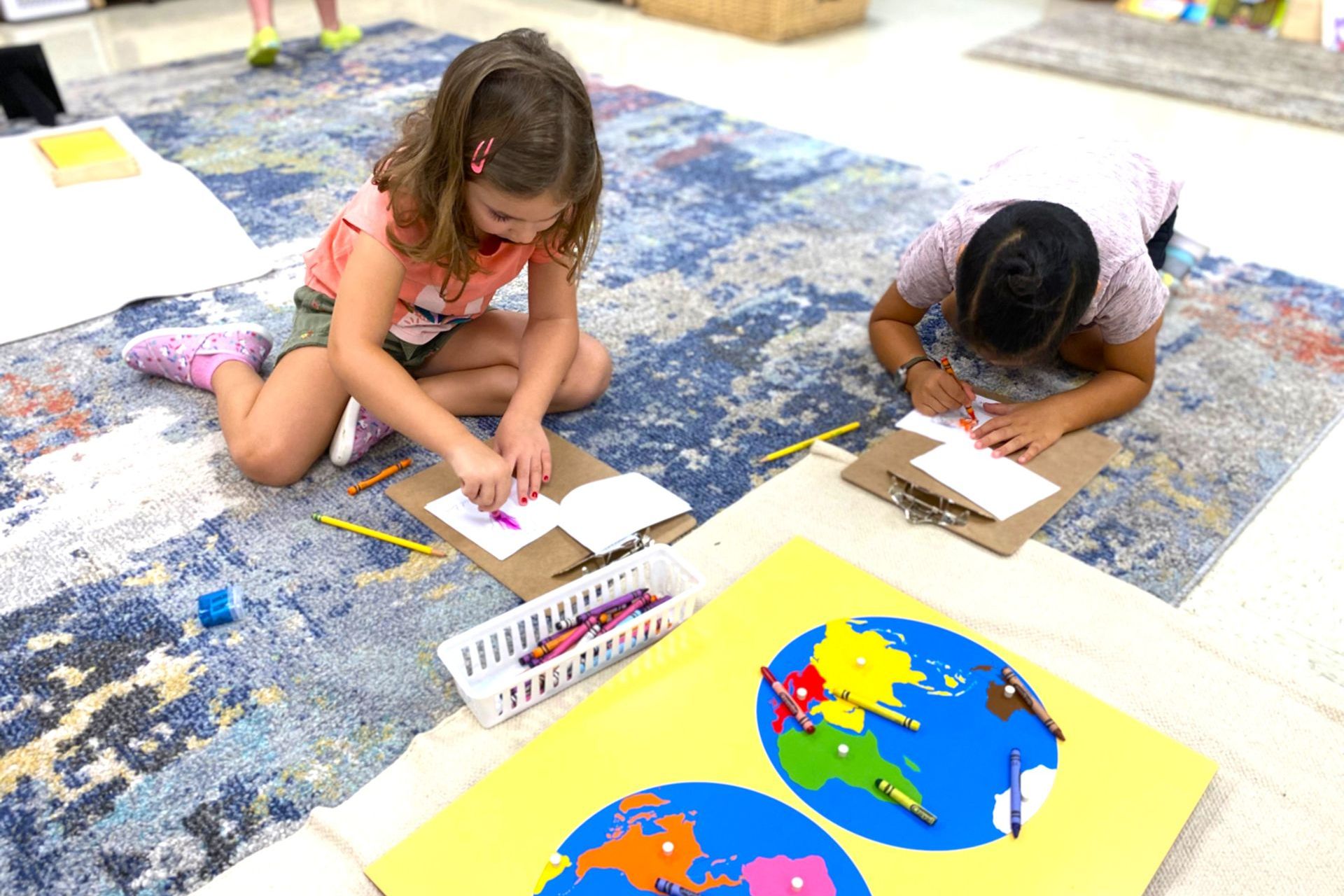
The Gift of Choice
Your child will be introduced to a broad range of concepts and activities in individual and small group lessons. The real learning, however, occurs through independent activity by choosing to explore it, repeat it and perfect it.
A Deep Connection Between Teacher and Child
Our Montessori certified teachers choose this career because of their love for children and dedication to Montessori education. Their depth of training and knowledge is amplified by the joyful and deep relationship they develop with your child throughout the three-year journey together.
Child Centered (Not Teacher Centered)
Unlike conventional classrooms, where all children are expected to pay close attention to the teacher, our program does the opposite – the teacher is trained to closely observe your child’s interests, tendencies and needs. You won’t see the teacher standing at the front of the classroom at a chalkboard, but rather down at your child’s level, engaged with with individual children or a small group.
Group Activities and Play
While most of the day is spent in self-directed work, there are also times for group activity and play. The teacher may gather a group for songs or to tell stories about a cultural, scientific, or historical theme of interest. Ample time is also given to run, dig, explore, and play with friends outdoors.
One Size Does Not Fit All
Instead of a top down curriculum based upon age, the teacher is trained to respect your child’s unique potential and connects him with the lesson best suited at that precise moment of development. Your child will be challenged according to their ability, not to a generic standard.
Essential Skills for a Successful Life
The early childhood classroom is designed to help your child become their best self. Through Grace and Courtesy activities, we teach your child how to solve conflicts, how to act politely in social situations and how to be kind and helpful to friends.
Kindergarten Included
Montessori is a continuum of education that allows your child to build upon experiences each year. Your child will stay in the early childhood classroom for 3 years, including the traditional “kindergarten year” – when the seeds of learning come to fruition. Reading and writing come to life from sounds and symbols in the immersion language. They are introduced to numbers, the decimal system, geometric figures, and the political countries of our world. Your child will leave the program with a strong set of academic skills, and, far more importantly, with the attitude that learning is fun, exciting and boundless. At this point, they is ready to move up to the
Elementary Program, for children from first through sixth grades.
100% One-Way Language Immersion
French, Spanish, or Mandarin Chinese.
Families choose a single language program when they join IMS and remain in that language through their time at IMS.
Enrollment Ages
Starting at 3 years old as of August 31. Children are considered kindergarteners when they are 5 years old as of August 31.
Length of Day
- Half day: 8:30AM-12:20PM*
- Regular day: 8:30AM-3:00PM
- After School: 3:00PM-5:30PM
* threes and fours only
International Montessori School only offers five-day programs.
Half day is not available for kindergarten students.

